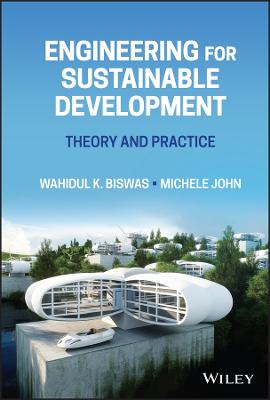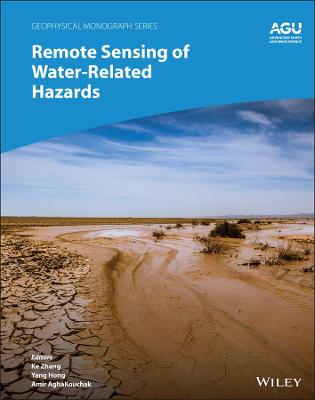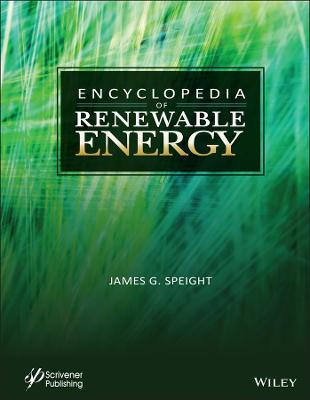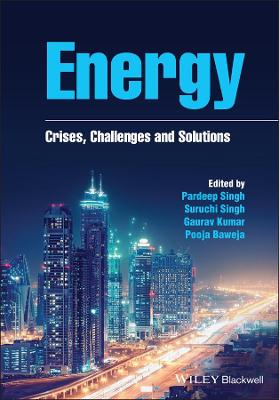Engineering for Sustainable Development
 -15%
portes grátis
-15%
portes grátis
Engineering for Sustainable Development
Theory and Practice
John, Michele; Biswas, Wahidul K.
John Wiley & Sons Inc
11/2022
352
Dura
Inglês
9781119720980
15 a 20 dias
Descrição não disponível.
Preface xv
Part I Challenges in Sustainable Engineering 1
1 Sustainability Challenges 3
1.1 Introduction 3
1.2 Weak Sustainability vs Strong Sustainability 6
1.3 Utility vs Throughput 8
1.4 Relative Scarcity vs Absolute Scarcity 10
1.5 Global/International Sustainability Agenda 10
1.6 Engineering Sustainability 12
1.7 IPAT 19
1.8 Environmental Kuznets Curves 20
1.9 Impact of Engineering Innovation on Earth's Carrying Capacity 21
1.10 Engineering Challenges in Reducing Ecological Footprint 22
1.11 Sustainability Implications of Engineering Design 24
1.12 Engineering Catastrophes 27
1.13 Existential Risks from Engineering Activities in the Twenty-First Century 30
1.13.1 Artificial Intelligence (AI) 30
1.13.2 Green Technologies 32
1.14 TheWay Forward 34
References 35
Part II Sustainability Assessment Tools 41
2 Quantifying Sustainability - Triple Bottom Line Assessment 43
2.1 Introduction 43
2.2 Triple Bottom Line 44
2.2.1 The Economic Bottom Line 44
2.2.2 Environmental Bottom Line 44
2.2.3 The Social Bottom Line 45
2.3 Characteristics of Indicators 46
2.4 How Do You Develop an Indicator? 47
2.5 Selection of Indicators 48
2.6 Participatory Approaches in Indicator Development 48
2.7 Description of Steps for Indicator Development 49
2.7.1 Step 1: Preliminary Selection of Indicators 49
2.7.2 Step 2: Questionnaire Design and Development 49
2.7.3 Step 3: Online Survey Development 49
2.7.4 Step 4: Participant Selection 49
2.7.5 Step 5: Final Selection of Indicators and Calculation of Their Weights 50
2.8 Sustainability Assessment Framework 53
2.8.1 Expert Survey 54
2.8.2 Stakeholders Survey 58
2.9 TBL Assessment for Bench Marking Purposes 60
2.10 Conclusions 61
References 62
3 Life Cycle Assessment for TBL Assessment - I 63
3.1 Life Cycle Thinking 63
3.2 Life Cycle Assessment 64
3.3 Environmental Life Cycle Assessment 65
3.3.1 Application of ELCA 66
3.3.2 ISO 14040-44 for Life Cycle Assessment 68
3.3.2.1 Step 1: Goal and Scope Definition 68
3.3.2.2 Step 2: Inventory Analysis 71
3.3.2.3 Step 3: Life Cycle Impact Assessment (LCIA) 72
3.3.2.4 Step 4: Interpretation 87
3.4 Allocation Method 87
3.5 Type of LCA 91
3.6 Uncertainty Analysis in LCA 92
3.7 Environmental Product Declaration 95
References 103
4 Economic and Social Life Cycle Assessment 107
4.1 Economic and Social Life Cycle Assessment 107
4.2 Life Cycle Costing 108
4.2.1 Discounted Cash Flow Analysis 110
4.2.2 Internalisation of External Costs 117
4.3 Social Life Cycle Assessment 120
4.3.1 Step 1: Goal and Scope Definition 121
4.3.2 Step 2: Life Cycle Inventory 123
4.3.3 Step 3: Life Cycle Social Impact 123
4.3.4 Step 4: Interpretation 124
4.4 Life Cycle Sustainability Assessment 128
References 130
Part III Sustainable Engineering Solutions 131
5 Sustainable Engineering Strategies 133
5.1 Engineering Strategies for Sustainable Development 133
5.2 Cleaner Production Strategies 134
5.2.1 Good Housekeeping 135
5.2.2 Input Substitution 136
5.2.3 Technology Modification 137
5.2.4 Product Modification 138
5.2.5 On Site Recovery/Recycling 138
5.3 Fuji Xerox Case Study - Integration of Five CPS 139
5.4 Business Case Benefits of Cleaner Production 140
5.5 Cleaner Production Assessment 140
5.5.1 Planning and Organisation 140
5.5.2 Assessment 141
5.5.3 Feasibility Studies 144
5.5.4 Implementation and Continuation 148
5.6 Eco-efficiency 150
5.6.1 Key Outcomes of Eco-efficiency 152
5.6.2 Eco-efficiency Portfolio Analysis in Choosing Eco-efficient Options 152
5.7 Environmental Management Systems 157
5.7.1 Aims of an EMS 160
5.7.2 A Basic EMS Framework: Plan, Do Check, Review 161
5.7.3 Interested Parties 161
5.7.4 Benefits of an EMS 162
5.8 Conclusions 164
References 165
6 Industrial Ecology 167
6.1 What Is Industrial Ecology? 167
6.2 Application of Industrial Ecology 168
6.3 Regional Synergies/Industrial Symbiosis 169
6.4 How Does It Happen? 172
6.5 Types of Industrial Symbiosis 173
6.6 Challenges in By-Product Reuse 179
6.7 What Is an Eco Industrial Park? 180
6.8 Practice Examples 185
6.8.1 Development of an EIP 185
6.8.2 Industrial Symbiosis in an Industrial Area 186
6.9 Industrial Symbiosis in Kwinana Industrial Area 187
6.9.1 Conclusions 187
References 189
7 Green Engineering 191
7.1 What Is Green Engineering? 191
7.1.1 Minimise 192
7.1.2 Substitute 192
7.1.3 Moderate 193
7.1.4 Simplify 193
7.2 Principles of Green Engineering 194
7.2.1 Inherent Rather than Circumstantial 194
7.2.2 Prevention Rather than Treatment 194
7.2.3 Design for Separation 194
7.2.4 Maximise Mass, Energy, Space, and Time Efficiency 195
7.2.5 Output-Pulled vs Input-Pushed 195
7.2.6 Conserve Complexity 196
7.2.7 Durability Rather than Immortality 196
7.2.8 Meet Need, Minimise Excess 197
7.2.9 Minimise Material Diversity 197
7.2.10 Integration and Interconnectivity 197
7.2.11 Material and Energy Inputs Should Be Renewable Rather than Depleting 198
7.2.12 Products, Processes, and Systems Should Be Designed for Performance in a Commercial 'After Life' 198
7.3 Application of Green Engineering 198
7.3.1 Chemical 199
7.3.1.1 PreventWaste 199
7.3.1.2 Maximise Atom Economy 200
7.3.1.3 Design Safer Chemicals and Products 201
7.3.1.4 Use Safer Solvents and Reaction Conditions 201
7.3.1.5 Use Renewable Feedstocks 202
7.3.1.6 Avoid Chemical Derivatives 203
7.3.1.7 Use Catalysts 203
7.3.1.8 Increase Energy Efficiency 203
7.3.1.9 Design Less Hazardous Chemical Syntheses 203
7.3.1.10 Design Chemicals and Products to Degrade After Use 204
7.3.1.11 Analyse in Real Time to Prevent Pollution 204
7.3.1.12 Minimise the Potential for Accidents 204
7.3.2 Sustainable Materials 206
7.3.2.1 Applications of Composite Materials 208
7.3.2.2 The Positives and Negatives of Composite Materials 209
7.3.2.3 Bio-Bricks 209
7.3.3 Heat Recovery 210
7.3.3.1 Temperature Classification 211
7.3.3.2 Heat Recovery Technologies 213
7.3.3.3 The Positives and Negatives ofWaste Heat Recovery 217
References 217
8 Design for the Environment 221
8.1 Introduction 221
8.2 Design for the Environment 221
8.3 Benefits of Design for the Environment 223
8.3.1 Economic Benefits 223
8.3.2 Operational Benefits 224
8.3.3 Marketing Benefits 225
8.4 Challenges Associated with Design for the Environment 225
8.5 Life Cycle Design Guidelines 228
8.6 Practice Examples 233
8.6.1 Design for Disassembly 233
8.6.2 The Life Cycle Benefits of Remanufacturing Strategies 236
8.7 ZeroWaste 240
8.7.1 Waste Diversion Rate 240
8.7.2 ZeroWaste Index 241
8.8 Circular Economy 243
8.8.1 Material Flow Analysis 245
8.8.2 Practice Example 247
8.9 Extended Producer Responsibilities 252
References 254
9 Sustainable Energy 257
9.1 Introduction 257
9.2 Energy, Environment, Economy, and Society 258
9.2.1 Energy and the Economy 258
9.2.2 Energy and the Environment 260
9.3 Sustainable Energy 261
9.4 Pathways Forward 265
9.4.1 Deployment of Renewable Energy 265
9.4.2 Improvements to Fossil Fuel Based Power Generation 266
9.4.3 Plug in Electric Vehicles 269
9.4.4 Green Hydrogen Economy 271
9.4.5 Smart Grid 273
9.4.6 Development of Efficient Energy Storage Technologies 274
9.4.7 Energy Storage and the Californian "Duck Curve" 279
9.4.8 Sustainability in Small-Scale Power Generation 280
9.4.8.1 Types of Decentralised Electricity Generation System 281
9.4.9 Blockchain for Sustainable Energy Solutions 284
9.4.10 Waste Heat Recovery 285
9.4.11 Carbon Capture Technologies 286
9.4.11.1 Post Combustion Capture 286
9.4.11.2 Pre-combustion Carbon Capture 287
9.4.12 Demand-side Management 288
9.4.12.1 National Perspective 289
9.4.12.2 User Perspective 290
9.4.12.3 CO2 Mitigation per Unit of Incremental Cost 290
9.5 Practice Example 291
9.5.1 Step 1 291
9.5.2 Step 2 294
9.5.3 Step 3 294
9.5.4 Step 4 295
9.5.5 Step 5 296
9.5.6 Step 6 296
9.5.7 Step 7 297
9.6 Life Cycle Energy Assessment 297
9.7 Reference Energy System 298
9.8 Conclusions 301
References 301
Part IV Outcomes 307
10 Engineering for Sustainable Development 309
10.1 Introduction 309
10.2 Sustainable Production and Consumption 309
10.3 Factor X 311
10.4 Climate Change Challenges 314
10.5 Water Challenges 320
10.6 Energy Challenges 321
10.7 Circular Economy and Dematerialisation 322
10.8 Engineering Ethics 324
10.8.1 Engineers Australia's Sustainability Policy - Practices 326
References 327
Index 331
Part I Challenges in Sustainable Engineering 1
1 Sustainability Challenges 3
1.1 Introduction 3
1.2 Weak Sustainability vs Strong Sustainability 6
1.3 Utility vs Throughput 8
1.4 Relative Scarcity vs Absolute Scarcity 10
1.5 Global/International Sustainability Agenda 10
1.6 Engineering Sustainability 12
1.7 IPAT 19
1.8 Environmental Kuznets Curves 20
1.9 Impact of Engineering Innovation on Earth's Carrying Capacity 21
1.10 Engineering Challenges in Reducing Ecological Footprint 22
1.11 Sustainability Implications of Engineering Design 24
1.12 Engineering Catastrophes 27
1.13 Existential Risks from Engineering Activities in the Twenty-First Century 30
1.13.1 Artificial Intelligence (AI) 30
1.13.2 Green Technologies 32
1.14 TheWay Forward 34
References 35
Part II Sustainability Assessment Tools 41
2 Quantifying Sustainability - Triple Bottom Line Assessment 43
2.1 Introduction 43
2.2 Triple Bottom Line 44
2.2.1 The Economic Bottom Line 44
2.2.2 Environmental Bottom Line 44
2.2.3 The Social Bottom Line 45
2.3 Characteristics of Indicators 46
2.4 How Do You Develop an Indicator? 47
2.5 Selection of Indicators 48
2.6 Participatory Approaches in Indicator Development 48
2.7 Description of Steps for Indicator Development 49
2.7.1 Step 1: Preliminary Selection of Indicators 49
2.7.2 Step 2: Questionnaire Design and Development 49
2.7.3 Step 3: Online Survey Development 49
2.7.4 Step 4: Participant Selection 49
2.7.5 Step 5: Final Selection of Indicators and Calculation of Their Weights 50
2.8 Sustainability Assessment Framework 53
2.8.1 Expert Survey 54
2.8.2 Stakeholders Survey 58
2.9 TBL Assessment for Bench Marking Purposes 60
2.10 Conclusions 61
References 62
3 Life Cycle Assessment for TBL Assessment - I 63
3.1 Life Cycle Thinking 63
3.2 Life Cycle Assessment 64
3.3 Environmental Life Cycle Assessment 65
3.3.1 Application of ELCA 66
3.3.2 ISO 14040-44 for Life Cycle Assessment 68
3.3.2.1 Step 1: Goal and Scope Definition 68
3.3.2.2 Step 2: Inventory Analysis 71
3.3.2.3 Step 3: Life Cycle Impact Assessment (LCIA) 72
3.3.2.4 Step 4: Interpretation 87
3.4 Allocation Method 87
3.5 Type of LCA 91
3.6 Uncertainty Analysis in LCA 92
3.7 Environmental Product Declaration 95
References 103
4 Economic and Social Life Cycle Assessment 107
4.1 Economic and Social Life Cycle Assessment 107
4.2 Life Cycle Costing 108
4.2.1 Discounted Cash Flow Analysis 110
4.2.2 Internalisation of External Costs 117
4.3 Social Life Cycle Assessment 120
4.3.1 Step 1: Goal and Scope Definition 121
4.3.2 Step 2: Life Cycle Inventory 123
4.3.3 Step 3: Life Cycle Social Impact 123
4.3.4 Step 4: Interpretation 124
4.4 Life Cycle Sustainability Assessment 128
References 130
Part III Sustainable Engineering Solutions 131
5 Sustainable Engineering Strategies 133
5.1 Engineering Strategies for Sustainable Development 133
5.2 Cleaner Production Strategies 134
5.2.1 Good Housekeeping 135
5.2.2 Input Substitution 136
5.2.3 Technology Modification 137
5.2.4 Product Modification 138
5.2.5 On Site Recovery/Recycling 138
5.3 Fuji Xerox Case Study - Integration of Five CPS 139
5.4 Business Case Benefits of Cleaner Production 140
5.5 Cleaner Production Assessment 140
5.5.1 Planning and Organisation 140
5.5.2 Assessment 141
5.5.3 Feasibility Studies 144
5.5.4 Implementation and Continuation 148
5.6 Eco-efficiency 150
5.6.1 Key Outcomes of Eco-efficiency 152
5.6.2 Eco-efficiency Portfolio Analysis in Choosing Eco-efficient Options 152
5.7 Environmental Management Systems 157
5.7.1 Aims of an EMS 160
5.7.2 A Basic EMS Framework: Plan, Do Check, Review 161
5.7.3 Interested Parties 161
5.7.4 Benefits of an EMS 162
5.8 Conclusions 164
References 165
6 Industrial Ecology 167
6.1 What Is Industrial Ecology? 167
6.2 Application of Industrial Ecology 168
6.3 Regional Synergies/Industrial Symbiosis 169
6.4 How Does It Happen? 172
6.5 Types of Industrial Symbiosis 173
6.6 Challenges in By-Product Reuse 179
6.7 What Is an Eco Industrial Park? 180
6.8 Practice Examples 185
6.8.1 Development of an EIP 185
6.8.2 Industrial Symbiosis in an Industrial Area 186
6.9 Industrial Symbiosis in Kwinana Industrial Area 187
6.9.1 Conclusions 187
References 189
7 Green Engineering 191
7.1 What Is Green Engineering? 191
7.1.1 Minimise 192
7.1.2 Substitute 192
7.1.3 Moderate 193
7.1.4 Simplify 193
7.2 Principles of Green Engineering 194
7.2.1 Inherent Rather than Circumstantial 194
7.2.2 Prevention Rather than Treatment 194
7.2.3 Design for Separation 194
7.2.4 Maximise Mass, Energy, Space, and Time Efficiency 195
7.2.5 Output-Pulled vs Input-Pushed 195
7.2.6 Conserve Complexity 196
7.2.7 Durability Rather than Immortality 196
7.2.8 Meet Need, Minimise Excess 197
7.2.9 Minimise Material Diversity 197
7.2.10 Integration and Interconnectivity 197
7.2.11 Material and Energy Inputs Should Be Renewable Rather than Depleting 198
7.2.12 Products, Processes, and Systems Should Be Designed for Performance in a Commercial 'After Life' 198
7.3 Application of Green Engineering 198
7.3.1 Chemical 199
7.3.1.1 PreventWaste 199
7.3.1.2 Maximise Atom Economy 200
7.3.1.3 Design Safer Chemicals and Products 201
7.3.1.4 Use Safer Solvents and Reaction Conditions 201
7.3.1.5 Use Renewable Feedstocks 202
7.3.1.6 Avoid Chemical Derivatives 203
7.3.1.7 Use Catalysts 203
7.3.1.8 Increase Energy Efficiency 203
7.3.1.9 Design Less Hazardous Chemical Syntheses 203
7.3.1.10 Design Chemicals and Products to Degrade After Use 204
7.3.1.11 Analyse in Real Time to Prevent Pollution 204
7.3.1.12 Minimise the Potential for Accidents 204
7.3.2 Sustainable Materials 206
7.3.2.1 Applications of Composite Materials 208
7.3.2.2 The Positives and Negatives of Composite Materials 209
7.3.2.3 Bio-Bricks 209
7.3.3 Heat Recovery 210
7.3.3.1 Temperature Classification 211
7.3.3.2 Heat Recovery Technologies 213
7.3.3.3 The Positives and Negatives ofWaste Heat Recovery 217
References 217
8 Design for the Environment 221
8.1 Introduction 221
8.2 Design for the Environment 221
8.3 Benefits of Design for the Environment 223
8.3.1 Economic Benefits 223
8.3.2 Operational Benefits 224
8.3.3 Marketing Benefits 225
8.4 Challenges Associated with Design for the Environment 225
8.5 Life Cycle Design Guidelines 228
8.6 Practice Examples 233
8.6.1 Design for Disassembly 233
8.6.2 The Life Cycle Benefits of Remanufacturing Strategies 236
8.7 ZeroWaste 240
8.7.1 Waste Diversion Rate 240
8.7.2 ZeroWaste Index 241
8.8 Circular Economy 243
8.8.1 Material Flow Analysis 245
8.8.2 Practice Example 247
8.9 Extended Producer Responsibilities 252
References 254
9 Sustainable Energy 257
9.1 Introduction 257
9.2 Energy, Environment, Economy, and Society 258
9.2.1 Energy and the Economy 258
9.2.2 Energy and the Environment 260
9.3 Sustainable Energy 261
9.4 Pathways Forward 265
9.4.1 Deployment of Renewable Energy 265
9.4.2 Improvements to Fossil Fuel Based Power Generation 266
9.4.3 Plug in Electric Vehicles 269
9.4.4 Green Hydrogen Economy 271
9.4.5 Smart Grid 273
9.4.6 Development of Efficient Energy Storage Technologies 274
9.4.7 Energy Storage and the Californian "Duck Curve" 279
9.4.8 Sustainability in Small-Scale Power Generation 280
9.4.8.1 Types of Decentralised Electricity Generation System 281
9.4.9 Blockchain for Sustainable Energy Solutions 284
9.4.10 Waste Heat Recovery 285
9.4.11 Carbon Capture Technologies 286
9.4.11.1 Post Combustion Capture 286
9.4.11.2 Pre-combustion Carbon Capture 287
9.4.12 Demand-side Management 288
9.4.12.1 National Perspective 289
9.4.12.2 User Perspective 290
9.4.12.3 CO2 Mitigation per Unit of Incremental Cost 290
9.5 Practice Example 291
9.5.1 Step 1 291
9.5.2 Step 2 294
9.5.3 Step 3 294
9.5.4 Step 4 295
9.5.5 Step 5 296
9.5.6 Step 6 296
9.5.7 Step 7 297
9.6 Life Cycle Energy Assessment 297
9.7 Reference Energy System 298
9.8 Conclusions 301
References 301
Part IV Outcomes 307
10 Engineering for Sustainable Development 309
10.1 Introduction 309
10.2 Sustainable Production and Consumption 309
10.3 Factor X 311
10.4 Climate Change Challenges 314
10.5 Water Challenges 320
10.6 Energy Challenges 321
10.7 Circular Economy and Dematerialisation 322
10.8 Engineering Ethics 324
10.8.1 Engineers Australia's Sustainability Policy - Practices 326
References 327
Index 331
Este título pertence ao(s) assunto(s) indicados(s). Para ver outros títulos clique no assunto desejado.
Sustainable engineering education; sustainable development focused engineering; sustainable engineering handbook; sustainable engineering technologies; sustainable engineering research; engineering and sustainability; sustainable engineering strategies
Preface xv
Part I Challenges in Sustainable Engineering 1
1 Sustainability Challenges 3
1.1 Introduction 3
1.2 Weak Sustainability vs Strong Sustainability 6
1.3 Utility vs Throughput 8
1.4 Relative Scarcity vs Absolute Scarcity 10
1.5 Global/International Sustainability Agenda 10
1.6 Engineering Sustainability 12
1.7 IPAT 19
1.8 Environmental Kuznets Curves 20
1.9 Impact of Engineering Innovation on Earth's Carrying Capacity 21
1.10 Engineering Challenges in Reducing Ecological Footprint 22
1.11 Sustainability Implications of Engineering Design 24
1.12 Engineering Catastrophes 27
1.13 Existential Risks from Engineering Activities in the Twenty-First Century 30
1.13.1 Artificial Intelligence (AI) 30
1.13.2 Green Technologies 32
1.14 TheWay Forward 34
References 35
Part II Sustainability Assessment Tools 41
2 Quantifying Sustainability - Triple Bottom Line Assessment 43
2.1 Introduction 43
2.2 Triple Bottom Line 44
2.2.1 The Economic Bottom Line 44
2.2.2 Environmental Bottom Line 44
2.2.3 The Social Bottom Line 45
2.3 Characteristics of Indicators 46
2.4 How Do You Develop an Indicator? 47
2.5 Selection of Indicators 48
2.6 Participatory Approaches in Indicator Development 48
2.7 Description of Steps for Indicator Development 49
2.7.1 Step 1: Preliminary Selection of Indicators 49
2.7.2 Step 2: Questionnaire Design and Development 49
2.7.3 Step 3: Online Survey Development 49
2.7.4 Step 4: Participant Selection 49
2.7.5 Step 5: Final Selection of Indicators and Calculation of Their Weights 50
2.8 Sustainability Assessment Framework 53
2.8.1 Expert Survey 54
2.8.2 Stakeholders Survey 58
2.9 TBL Assessment for Bench Marking Purposes 60
2.10 Conclusions 61
References 62
3 Life Cycle Assessment for TBL Assessment - I 63
3.1 Life Cycle Thinking 63
3.2 Life Cycle Assessment 64
3.3 Environmental Life Cycle Assessment 65
3.3.1 Application of ELCA 66
3.3.2 ISO 14040-44 for Life Cycle Assessment 68
3.3.2.1 Step 1: Goal and Scope Definition 68
3.3.2.2 Step 2: Inventory Analysis 71
3.3.2.3 Step 3: Life Cycle Impact Assessment (LCIA) 72
3.3.2.4 Step 4: Interpretation 87
3.4 Allocation Method 87
3.5 Type of LCA 91
3.6 Uncertainty Analysis in LCA 92
3.7 Environmental Product Declaration 95
References 103
4 Economic and Social Life Cycle Assessment 107
4.1 Economic and Social Life Cycle Assessment 107
4.2 Life Cycle Costing 108
4.2.1 Discounted Cash Flow Analysis 110
4.2.2 Internalisation of External Costs 117
4.3 Social Life Cycle Assessment 120
4.3.1 Step 1: Goal and Scope Definition 121
4.3.2 Step 2: Life Cycle Inventory 123
4.3.3 Step 3: Life Cycle Social Impact 123
4.3.4 Step 4: Interpretation 124
4.4 Life Cycle Sustainability Assessment 128
References 130
Part III Sustainable Engineering Solutions 131
5 Sustainable Engineering Strategies 133
5.1 Engineering Strategies for Sustainable Development 133
5.2 Cleaner Production Strategies 134
5.2.1 Good Housekeeping 135
5.2.2 Input Substitution 136
5.2.3 Technology Modification 137
5.2.4 Product Modification 138
5.2.5 On Site Recovery/Recycling 138
5.3 Fuji Xerox Case Study - Integration of Five CPS 139
5.4 Business Case Benefits of Cleaner Production 140
5.5 Cleaner Production Assessment 140
5.5.1 Planning and Organisation 140
5.5.2 Assessment 141
5.5.3 Feasibility Studies 144
5.5.4 Implementation and Continuation 148
5.6 Eco-efficiency 150
5.6.1 Key Outcomes of Eco-efficiency 152
5.6.2 Eco-efficiency Portfolio Analysis in Choosing Eco-efficient Options 152
5.7 Environmental Management Systems 157
5.7.1 Aims of an EMS 160
5.7.2 A Basic EMS Framework: Plan, Do Check, Review 161
5.7.3 Interested Parties 161
5.7.4 Benefits of an EMS 162
5.8 Conclusions 164
References 165
6 Industrial Ecology 167
6.1 What Is Industrial Ecology? 167
6.2 Application of Industrial Ecology 168
6.3 Regional Synergies/Industrial Symbiosis 169
6.4 How Does It Happen? 172
6.5 Types of Industrial Symbiosis 173
6.6 Challenges in By-Product Reuse 179
6.7 What Is an Eco Industrial Park? 180
6.8 Practice Examples 185
6.8.1 Development of an EIP 185
6.8.2 Industrial Symbiosis in an Industrial Area 186
6.9 Industrial Symbiosis in Kwinana Industrial Area 187
6.9.1 Conclusions 187
References 189
7 Green Engineering 191
7.1 What Is Green Engineering? 191
7.1.1 Minimise 192
7.1.2 Substitute 192
7.1.3 Moderate 193
7.1.4 Simplify 193
7.2 Principles of Green Engineering 194
7.2.1 Inherent Rather than Circumstantial 194
7.2.2 Prevention Rather than Treatment 194
7.2.3 Design for Separation 194
7.2.4 Maximise Mass, Energy, Space, and Time Efficiency 195
7.2.5 Output-Pulled vs Input-Pushed 195
7.2.6 Conserve Complexity 196
7.2.7 Durability Rather than Immortality 196
7.2.8 Meet Need, Minimise Excess 197
7.2.9 Minimise Material Diversity 197
7.2.10 Integration and Interconnectivity 197
7.2.11 Material and Energy Inputs Should Be Renewable Rather than Depleting 198
7.2.12 Products, Processes, and Systems Should Be Designed for Performance in a Commercial 'After Life' 198
7.3 Application of Green Engineering 198
7.3.1 Chemical 199
7.3.1.1 PreventWaste 199
7.3.1.2 Maximise Atom Economy 200
7.3.1.3 Design Safer Chemicals and Products 201
7.3.1.4 Use Safer Solvents and Reaction Conditions 201
7.3.1.5 Use Renewable Feedstocks 202
7.3.1.6 Avoid Chemical Derivatives 203
7.3.1.7 Use Catalysts 203
7.3.1.8 Increase Energy Efficiency 203
7.3.1.9 Design Less Hazardous Chemical Syntheses 203
7.3.1.10 Design Chemicals and Products to Degrade After Use 204
7.3.1.11 Analyse in Real Time to Prevent Pollution 204
7.3.1.12 Minimise the Potential for Accidents 204
7.3.2 Sustainable Materials 206
7.3.2.1 Applications of Composite Materials 208
7.3.2.2 The Positives and Negatives of Composite Materials 209
7.3.2.3 Bio-Bricks 209
7.3.3 Heat Recovery 210
7.3.3.1 Temperature Classification 211
7.3.3.2 Heat Recovery Technologies 213
7.3.3.3 The Positives and Negatives ofWaste Heat Recovery 217
References 217
8 Design for the Environment 221
8.1 Introduction 221
8.2 Design for the Environment 221
8.3 Benefits of Design for the Environment 223
8.3.1 Economic Benefits 223
8.3.2 Operational Benefits 224
8.3.3 Marketing Benefits 225
8.4 Challenges Associated with Design for the Environment 225
8.5 Life Cycle Design Guidelines 228
8.6 Practice Examples 233
8.6.1 Design for Disassembly 233
8.6.2 The Life Cycle Benefits of Remanufacturing Strategies 236
8.7 ZeroWaste 240
8.7.1 Waste Diversion Rate 240
8.7.2 ZeroWaste Index 241
8.8 Circular Economy 243
8.8.1 Material Flow Analysis 245
8.8.2 Practice Example 247
8.9 Extended Producer Responsibilities 252
References 254
9 Sustainable Energy 257
9.1 Introduction 257
9.2 Energy, Environment, Economy, and Society 258
9.2.1 Energy and the Economy 258
9.2.2 Energy and the Environment 260
9.3 Sustainable Energy 261
9.4 Pathways Forward 265
9.4.1 Deployment of Renewable Energy 265
9.4.2 Improvements to Fossil Fuel Based Power Generation 266
9.4.3 Plug in Electric Vehicles 269
9.4.4 Green Hydrogen Economy 271
9.4.5 Smart Grid 273
9.4.6 Development of Efficient Energy Storage Technologies 274
9.4.7 Energy Storage and the Californian "Duck Curve" 279
9.4.8 Sustainability in Small-Scale Power Generation 280
9.4.8.1 Types of Decentralised Electricity Generation System 281
9.4.9 Blockchain for Sustainable Energy Solutions 284
9.4.10 Waste Heat Recovery 285
9.4.11 Carbon Capture Technologies 286
9.4.11.1 Post Combustion Capture 286
9.4.11.2 Pre-combustion Carbon Capture 287
9.4.12 Demand-side Management 288
9.4.12.1 National Perspective 289
9.4.12.2 User Perspective 290
9.4.12.3 CO2 Mitigation per Unit of Incremental Cost 290
9.5 Practice Example 291
9.5.1 Step 1 291
9.5.2 Step 2 294
9.5.3 Step 3 294
9.5.4 Step 4 295
9.5.5 Step 5 296
9.5.6 Step 6 296
9.5.7 Step 7 297
9.6 Life Cycle Energy Assessment 297
9.7 Reference Energy System 298
9.8 Conclusions 301
References 301
Part IV Outcomes 307
10 Engineering for Sustainable Development 309
10.1 Introduction 309
10.2 Sustainable Production and Consumption 309
10.3 Factor X 311
10.4 Climate Change Challenges 314
10.5 Water Challenges 320
10.6 Energy Challenges 321
10.7 Circular Economy and Dematerialisation 322
10.8 Engineering Ethics 324
10.8.1 Engineers Australia's Sustainability Policy - Practices 326
References 327
Index 331
Part I Challenges in Sustainable Engineering 1
1 Sustainability Challenges 3
1.1 Introduction 3
1.2 Weak Sustainability vs Strong Sustainability 6
1.3 Utility vs Throughput 8
1.4 Relative Scarcity vs Absolute Scarcity 10
1.5 Global/International Sustainability Agenda 10
1.6 Engineering Sustainability 12
1.7 IPAT 19
1.8 Environmental Kuznets Curves 20
1.9 Impact of Engineering Innovation on Earth's Carrying Capacity 21
1.10 Engineering Challenges in Reducing Ecological Footprint 22
1.11 Sustainability Implications of Engineering Design 24
1.12 Engineering Catastrophes 27
1.13 Existential Risks from Engineering Activities in the Twenty-First Century 30
1.13.1 Artificial Intelligence (AI) 30
1.13.2 Green Technologies 32
1.14 TheWay Forward 34
References 35
Part II Sustainability Assessment Tools 41
2 Quantifying Sustainability - Triple Bottom Line Assessment 43
2.1 Introduction 43
2.2 Triple Bottom Line 44
2.2.1 The Economic Bottom Line 44
2.2.2 Environmental Bottom Line 44
2.2.3 The Social Bottom Line 45
2.3 Characteristics of Indicators 46
2.4 How Do You Develop an Indicator? 47
2.5 Selection of Indicators 48
2.6 Participatory Approaches in Indicator Development 48
2.7 Description of Steps for Indicator Development 49
2.7.1 Step 1: Preliminary Selection of Indicators 49
2.7.2 Step 2: Questionnaire Design and Development 49
2.7.3 Step 3: Online Survey Development 49
2.7.4 Step 4: Participant Selection 49
2.7.5 Step 5: Final Selection of Indicators and Calculation of Their Weights 50
2.8 Sustainability Assessment Framework 53
2.8.1 Expert Survey 54
2.8.2 Stakeholders Survey 58
2.9 TBL Assessment for Bench Marking Purposes 60
2.10 Conclusions 61
References 62
3 Life Cycle Assessment for TBL Assessment - I 63
3.1 Life Cycle Thinking 63
3.2 Life Cycle Assessment 64
3.3 Environmental Life Cycle Assessment 65
3.3.1 Application of ELCA 66
3.3.2 ISO 14040-44 for Life Cycle Assessment 68
3.3.2.1 Step 1: Goal and Scope Definition 68
3.3.2.2 Step 2: Inventory Analysis 71
3.3.2.3 Step 3: Life Cycle Impact Assessment (LCIA) 72
3.3.2.4 Step 4: Interpretation 87
3.4 Allocation Method 87
3.5 Type of LCA 91
3.6 Uncertainty Analysis in LCA 92
3.7 Environmental Product Declaration 95
References 103
4 Economic and Social Life Cycle Assessment 107
4.1 Economic and Social Life Cycle Assessment 107
4.2 Life Cycle Costing 108
4.2.1 Discounted Cash Flow Analysis 110
4.2.2 Internalisation of External Costs 117
4.3 Social Life Cycle Assessment 120
4.3.1 Step 1: Goal and Scope Definition 121
4.3.2 Step 2: Life Cycle Inventory 123
4.3.3 Step 3: Life Cycle Social Impact 123
4.3.4 Step 4: Interpretation 124
4.4 Life Cycle Sustainability Assessment 128
References 130
Part III Sustainable Engineering Solutions 131
5 Sustainable Engineering Strategies 133
5.1 Engineering Strategies for Sustainable Development 133
5.2 Cleaner Production Strategies 134
5.2.1 Good Housekeeping 135
5.2.2 Input Substitution 136
5.2.3 Technology Modification 137
5.2.4 Product Modification 138
5.2.5 On Site Recovery/Recycling 138
5.3 Fuji Xerox Case Study - Integration of Five CPS 139
5.4 Business Case Benefits of Cleaner Production 140
5.5 Cleaner Production Assessment 140
5.5.1 Planning and Organisation 140
5.5.2 Assessment 141
5.5.3 Feasibility Studies 144
5.5.4 Implementation and Continuation 148
5.6 Eco-efficiency 150
5.6.1 Key Outcomes of Eco-efficiency 152
5.6.2 Eco-efficiency Portfolio Analysis in Choosing Eco-efficient Options 152
5.7 Environmental Management Systems 157
5.7.1 Aims of an EMS 160
5.7.2 A Basic EMS Framework: Plan, Do Check, Review 161
5.7.3 Interested Parties 161
5.7.4 Benefits of an EMS 162
5.8 Conclusions 164
References 165
6 Industrial Ecology 167
6.1 What Is Industrial Ecology? 167
6.2 Application of Industrial Ecology 168
6.3 Regional Synergies/Industrial Symbiosis 169
6.4 How Does It Happen? 172
6.5 Types of Industrial Symbiosis 173
6.6 Challenges in By-Product Reuse 179
6.7 What Is an Eco Industrial Park? 180
6.8 Practice Examples 185
6.8.1 Development of an EIP 185
6.8.2 Industrial Symbiosis in an Industrial Area 186
6.9 Industrial Symbiosis in Kwinana Industrial Area 187
6.9.1 Conclusions 187
References 189
7 Green Engineering 191
7.1 What Is Green Engineering? 191
7.1.1 Minimise 192
7.1.2 Substitute 192
7.1.3 Moderate 193
7.1.4 Simplify 193
7.2 Principles of Green Engineering 194
7.2.1 Inherent Rather than Circumstantial 194
7.2.2 Prevention Rather than Treatment 194
7.2.3 Design for Separation 194
7.2.4 Maximise Mass, Energy, Space, and Time Efficiency 195
7.2.5 Output-Pulled vs Input-Pushed 195
7.2.6 Conserve Complexity 196
7.2.7 Durability Rather than Immortality 196
7.2.8 Meet Need, Minimise Excess 197
7.2.9 Minimise Material Diversity 197
7.2.10 Integration and Interconnectivity 197
7.2.11 Material and Energy Inputs Should Be Renewable Rather than Depleting 198
7.2.12 Products, Processes, and Systems Should Be Designed for Performance in a Commercial 'After Life' 198
7.3 Application of Green Engineering 198
7.3.1 Chemical 199
7.3.1.1 PreventWaste 199
7.3.1.2 Maximise Atom Economy 200
7.3.1.3 Design Safer Chemicals and Products 201
7.3.1.4 Use Safer Solvents and Reaction Conditions 201
7.3.1.5 Use Renewable Feedstocks 202
7.3.1.6 Avoid Chemical Derivatives 203
7.3.1.7 Use Catalysts 203
7.3.1.8 Increase Energy Efficiency 203
7.3.1.9 Design Less Hazardous Chemical Syntheses 203
7.3.1.10 Design Chemicals and Products to Degrade After Use 204
7.3.1.11 Analyse in Real Time to Prevent Pollution 204
7.3.1.12 Minimise the Potential for Accidents 204
7.3.2 Sustainable Materials 206
7.3.2.1 Applications of Composite Materials 208
7.3.2.2 The Positives and Negatives of Composite Materials 209
7.3.2.3 Bio-Bricks 209
7.3.3 Heat Recovery 210
7.3.3.1 Temperature Classification 211
7.3.3.2 Heat Recovery Technologies 213
7.3.3.3 The Positives and Negatives ofWaste Heat Recovery 217
References 217
8 Design for the Environment 221
8.1 Introduction 221
8.2 Design for the Environment 221
8.3 Benefits of Design for the Environment 223
8.3.1 Economic Benefits 223
8.3.2 Operational Benefits 224
8.3.3 Marketing Benefits 225
8.4 Challenges Associated with Design for the Environment 225
8.5 Life Cycle Design Guidelines 228
8.6 Practice Examples 233
8.6.1 Design for Disassembly 233
8.6.2 The Life Cycle Benefits of Remanufacturing Strategies 236
8.7 ZeroWaste 240
8.7.1 Waste Diversion Rate 240
8.7.2 ZeroWaste Index 241
8.8 Circular Economy 243
8.8.1 Material Flow Analysis 245
8.8.2 Practice Example 247
8.9 Extended Producer Responsibilities 252
References 254
9 Sustainable Energy 257
9.1 Introduction 257
9.2 Energy, Environment, Economy, and Society 258
9.2.1 Energy and the Economy 258
9.2.2 Energy and the Environment 260
9.3 Sustainable Energy 261
9.4 Pathways Forward 265
9.4.1 Deployment of Renewable Energy 265
9.4.2 Improvements to Fossil Fuel Based Power Generation 266
9.4.3 Plug in Electric Vehicles 269
9.4.4 Green Hydrogen Economy 271
9.4.5 Smart Grid 273
9.4.6 Development of Efficient Energy Storage Technologies 274
9.4.7 Energy Storage and the Californian "Duck Curve" 279
9.4.8 Sustainability in Small-Scale Power Generation 280
9.4.8.1 Types of Decentralised Electricity Generation System 281
9.4.9 Blockchain for Sustainable Energy Solutions 284
9.4.10 Waste Heat Recovery 285
9.4.11 Carbon Capture Technologies 286
9.4.11.1 Post Combustion Capture 286
9.4.11.2 Pre-combustion Carbon Capture 287
9.4.12 Demand-side Management 288
9.4.12.1 National Perspective 289
9.4.12.2 User Perspective 290
9.4.12.3 CO2 Mitigation per Unit of Incremental Cost 290
9.5 Practice Example 291
9.5.1 Step 1 291
9.5.2 Step 2 294
9.5.3 Step 3 294
9.5.4 Step 4 295
9.5.5 Step 5 296
9.5.6 Step 6 296
9.5.7 Step 7 297
9.6 Life Cycle Energy Assessment 297
9.7 Reference Energy System 298
9.8 Conclusions 301
References 301
Part IV Outcomes 307
10 Engineering for Sustainable Development 309
10.1 Introduction 309
10.2 Sustainable Production and Consumption 309
10.3 Factor X 311
10.4 Climate Change Challenges 314
10.5 Water Challenges 320
10.6 Energy Challenges 321
10.7 Circular Economy and Dematerialisation 322
10.8 Engineering Ethics 324
10.8.1 Engineers Australia's Sustainability Policy - Practices 326
References 327
Index 331
Este título pertence ao(s) assunto(s) indicados(s). Para ver outros títulos clique no assunto desejado.







